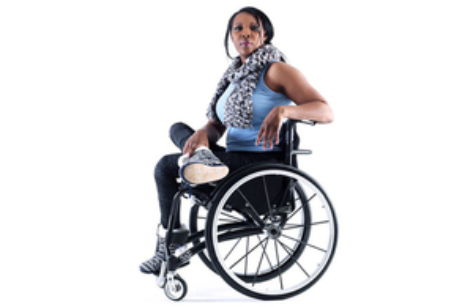Changing places toilets
On 24 December 2018 the Ministry of Housing, Communities & Local Government announced proposals to make Changing Places for severely disabled people mandatory in new large public buildings.
Changing Places toilets are larger than standard disabled toilets and have extra equipment like adult-sized changing benches, hoists, peninsular WCs (further removed from the wall and with space at the sides) and showers. People with disabilities and their carers say Changing Places in public can be life changing and allow them to go out in the public without fear or stress.
Currently, the building regulations only recommend Changing Places toilets are provided, and there are only 30 to 40 Changing Places on the entire NHS England estate. But Care Minister Caroline Dinenage confirmed that more that 100 NHS hospitals will build Changing Places facilities backed by a £2 million fund and that new shopping centres, stadiums and theme parks are among buildings that could be required to provide Changing Places toilets.
Ministers will launch a consultation in 2019 on proposals that facilities are included in all new large publicly-accessible buildings and other significant redevelopments in England.
The government has also provided £70,000 for an online map of the UK that helps carers and disabled people find Changing Places toilets.
Local Government Minister Rishi Sunak MP said; “Changing Places toilets make a huge difference to the lives of severely disabled people. I want to see these facilities included as standard in new large buildings like shopping centres and cinemas, so more disabled people can be assured peace of mind and dignity when they are away from home. The government will consult in the New Year on how best to do this, including changing building regulations if required, if it means more disabled people can get access the essential services they deserve.”
Caroline Dinenage said; “It is utterly shocking how few Changing Places toilets there are currently in NHS hospitals and other public spaces. People with disabilities and their carers rightly expect to find suitable facilities in a hospital of all places. A quarter of a million disabled people need Changing Places and this investment will mean many more of them can access a toilet safely and comfortably.”
Catherine Woodhead, Chief Executive of Muscular Dystrophy UK, which co-chairs the Changing Places Consortium, said; “We, along with our wonderful campaigners, have long pushed for changes to legislation to make Changing Places toilets mandatory in new large public buildings and it’s fantastic that we are now one step closer to that reality.”
The cost of installing a changing places facility in a hospital is usually between £27,000 and £35,000. The £2 million will be allocated on the principles of matched funding, with Trusts contributing to the cost.
On 12 May 2019 the government opened a consultation into the proposals. The 10-week consultation closes on 21 July. Ref https://www.gov.uk/government/news/new-public-buildings-to-have-changing-places-toilets-for-severely-disabled-people
In July 2020, The government announced the compulsory inclusion of changing places toilets in new public buildings. Places of assembly, recreation and entertainment with a capacity for 350 or more people will be required to install the facilities if they are newly built or have a major refurbishment. The government estimates this will add the toilets to more than 150 new buildings a year. In addition, a £30 million fund will be available to install changing places toilets in existing buildings. Ref https://www.gov.uk/government/news/changing-places-toilets-for-severely-disabled-people-to-be-compulsory-in-new-public-buildings
See also the announcement of funding on 4 March 2021. https://www.gov.uk/government/news/30-million-investment-to-provide-changing-places-toilets
[edit] Related articles on Designing Buildings Wiki
- Accessibility in the built environment.
- Approved Document G.
- Approved Document H.
- Approved Document M.
- Bathroom definition.
- Changing lifestyles.
- Equality Act.
- Inclusive design.
- Lifetime Homes Design Guide (EP 100).
- Lifetime homes.
- People with disabilities.
- Installed level access shower.
- Sanitaryware.
- Sanitary accommodation.
- Water closet.
- Wet room.
Featured articles and news
RTPI leader to become new CIOB Chief Executive Officer
Dr Victoria Hills MRTPI, FICE to take over after Caroline Gumble’s departure.
Social and affordable housing, a long term plan for delivery
The “Delivering a Decade of Renewal for Social and Affordable Housing” strategy sets out future path.
A change to adoptive architecture
Effects of global weather warming on architectural detailing, material choice and human interaction.
The proposed publicly owned and backed subsidiary of Homes England, to facilitate new homes.
How big is the problem and what can we do to mitigate the effects?
Overheating guidance and tools for building designers
A number of cool guides to help with the heat.
The UK's Modern Industrial Strategy: A 10 year plan
Previous consultation criticism, current key elements and general support with some persisting reservations.
Building Safety Regulator reforms
New roles, new staff and a new fast track service pave the way for a single construction regulator.
Architectural Technologist CPDs and Communications
CIAT CPD… and how you can do it!
Cooling centres and cool spaces
Managing extreme heat in cities by directing the public to places for heat stress relief and water sources.
Winter gardens: A brief history and warm variations
Extending the season with glass in different forms and terms.
Restoring Great Yarmouth's Winter Gardens
Transforming one of the least sustainable constructions imaginable.
Construction Skills Mission Board launch sector drive
Newly formed government and industry collaboration set strategy for recruiting an additional 100,000 construction workers a year.
New Architects Code comes into effect in September 2025
ARB Architects Code of Conduct and Practice available with ongoing consultation regarding guidance.
Welsh Skills Body (Medr) launches ambitious plan
The new skills body brings together funding and regulation of tertiary education and research for the devolved nation.
Paul Gandy FCIOB announced as next CIOB President
Former Tilbury Douglas CEO takes helm.
UK Infrastructure: A 10 Year Strategy. In brief with reactions
With the National Infrastructure and Service Transformation Authority (NISTA).























